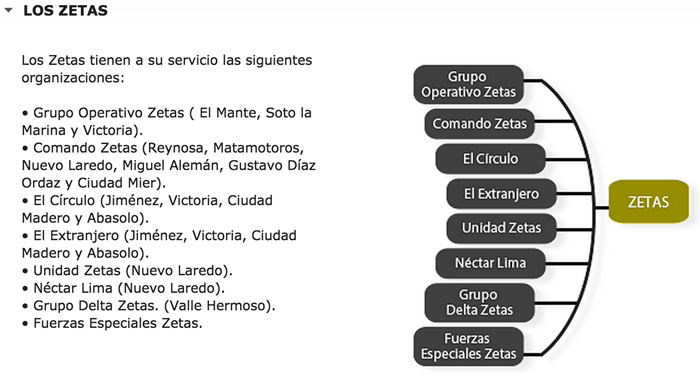A US government cable that reportedly speculates who would replace the Zetas' recently captured leader misses the point when it analyzes the criminal organization: it's not about who runs the group, it's about how the group makes its money.
United States intelligence agencies named four possible replacements for former Zetas' leader Alejandro "Omar" Treviño Morales, alias "Z42," Reporte Indigo reported, citing an internal cable. Two of these are more prone to violence and two to more conciliatory tactics, the report said.
Z42's older brother, Juan Francisco Treviño Morales, and Rogelio Gonzalez Pizaña, alias "El Kelin" or "Z2," were named as replacements that could steer the Zetas away from extreme violence.
Juan Francisco spent nearly 20 years in US prison prior to his release in 2014. Consequently, he missed Mexico traffickers' adoption of extremely violent tactics. Should he assume power, this could move the Zetas towards what the Reporte Indigo report terms "old school" organized crime methods, which include refraining from involving civilians or targeting the families of rivals.
El Kelin, the alleged leader of a Zetas faction known as the Zetas Unidos, would also likely take the Zetas on a less violent path, the report noted. According to a joint statement circulated last year, El Kelin is part of a proclaimed truce between Zetas Unidos and rival criminal organization the Gulf Cartel.
On the other side of the equation, Z42's principal lieutenants Sergio Ricardo Basuro Peña, alias "El Grande," and Maxiel Barahona Nadales, alias "El Contador," remain at large and could take control of the Zetas, making them an even more violent organization, the report claims.
According to Reporte Indigo, citing Mexican intelligence reports, the Zetas are now more focused on kidnapping and extortion than drug trafficking. Should the Zetas fall under the control of El Grande or El Contador, the group would be expected to fight even more violently for control of northern Mexico, one of the Zetas' few remaining strongholds, the report said.
Insight Crime Analysis
The US cable cited by Reporte Indigo is focused on individual leaders, which is only part of the reason why any group would be violent or choose a more statesman-like path.
The Zetas are not just violent because their leaders have a penchant for aggression -- they follow an economic model that relies on controlling territory in a violent way. Within that territory, they extract rents from other criminal actors and move only a limited number of illegal goods via some of their own networks. (Mexico's intelligence services say as much when they talk about the group's increasing dependence on kidnapping and extortion.)
Without that territory, they have no rent (known in Mexico as "piso"). The Zetas are, in essence, parasites. Their model depends on their ability to be more powerful and violent than their counterparts, so they can extract this rent.
Contrast this with a more service-oriented approach of a criminal group that is distributing illegal drugs, managing prostitution rings, or moving contraband. These groups need muscle, to be sure, but they do not depend on it for their revenue.
What's more, violence is bad for business for these kinds of criminal groups. They need alliances and partners in order to function, not a hyper-violent approach that isolates them and shrinks their business opportunities.
The Zetas' model also makes it harder to maintain a cohesive, unified organization. This is because it is easier for the smaller Zeta factions to make their own money once they have the infrastructure and wherewithal to do it. They are not beholden to international revenue streams, but rather live off of local criminal economies.
This process accelerates when violence or arrests take out the leadership, something that happens constantly in areas controlled by the Zetas. The results of this process are clear in Tamaulipas, the Zetas' stronghold where, as a recent report by El Universal showed, the group has splintered into at least eight different organizations. (See list below from El Universal)

"The last 12, 18 months of fighting in Veracruz and Tamaulipas has shown the extent of the Zetas fragmentation and atomization," Antonio L. Mazzitelli, the UNODC representative to Mexico, told InSight Crime.
These factions of the Zetas are fighting an equally disparate and fractured Gulf Cartel, which El Universal says has as many as 12 different organizations.
Thus, any leader assuming Z42's place would be taking over an arguably declining organization with less resources and a more fractured structure. And in the end -- whoever takes of Z42's former faction -- the decision on whether to take the Zetas on a more violent or a more diplomatic path may not even be his choice to make.